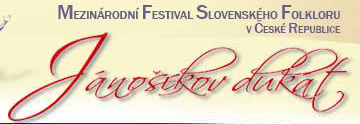Monday 9. June 2025
History of Bukovec village [ History ]
The first mention comes from 1342. Bukovec was founded in 1353 by the Těšín Prince Kazimír as a donation of approximately 147 hectares of forest to a certain Gros who became also the first "fojt" (Village Mayor) of Bukovec. Originally, Bukovec formed a backdrop for the guarding of the southwest part of the Těšín Principality. Fojt Gros was given rights to construct a mill on the Olše River, to open pub and slaughterhouse and to carry on the trade of smith. The first inhabitants earned their livelihoods in cutting of oak forests (oak in Czech = buck; hence the name of the village). Gradually, the inhabitants became preoccupied with agriculture. Later, the Wallachians who earned their livelihoods in mountain shepherding, even started Alpine dairy farming there... At the beginning the people from Bukovec lived in simple wooden cottages with no chimneys - the dense smoke from the fireplaces was carried through a hole above door to hall, then to attic and through a window outwards. (For this reason these cottages were branded as "kurne" or "dymne" It is even possible to meet the brand "kurloky"). The dwelling assembly was very severe - small windows, massive tables, benches with back rest serving also for sleeping, two shorter benches without back rests at the table, bed for the housekeeper and plant beds for older children. A greater level of comfort was not brought into local dwellings until the second half of the 19th century when the local people began to commute to the surroundings for work and started to come into contact with the way of life in towns. Also, the fact that the village was situated on the so called " Salt Path" that led from the Polish salt mines at Velička by way of Cracow, Oswiecim, Zátor, Bílsko, Živec, Kamešnice, Koňakov, Istebna, Bukovec and Písek to Jablunkov played its part to a large extent in the development of it. This trade had carried on since the 18th century and because the carters carried salt across Bukovec, this village also had profit from the trade. Besides the salt trade, the Bukovec people earned their livelihoods in agriculture, wood transporting and smithing - there were two mills at the village... With the development of industry the citizens began to commute to the nearby factories. The proximity of the boundary caused development of another handicrafts - " smuggling - (spirit, plush, horses); Educational classes have a long-standing tradition at Bukovec - the children of this place had been able to improve their minds since 1792. The first teacher was a certain smith, Sikora, in whose smithy the classes took place. There are two schools at the village - a Polish one and a Czech one.
The village had its own seal since 1702 when the Těšín Chamber en masse provided the villages in their possession with seal prints (so called typáře). The oval 25mm high and 21mm across carried a depiction of a shovel. The majuscule legend placed between the double line and line with corsican fritillary read: (9+) * BVKOWETZ * ANNO 1702.
In 1816 Bukovec got a new seal print - this time with a shovel situated in an inverted position (upwards) and with its handle standing on the indicated two-peak hill in addition. The oval seal 28mm high and 25mm across had the legend with a doubled line from inside and a single line from outside: (9+) BVKOWIEC * ANNO 1816. Gumowski found an imprint of seal dated 1838. The shovel appears on Bukovec official stamps from the first half of the 20th century.
The village had its own seal since 1702 when the Těšín Chamber en masse provided the villages in their possession with seal prints (so called typáře). The oval 25mm high and 21mm across carried a depiction of a shovel. The majuscule legend placed between the double line and line with corsican fritillary read: (9+) * BVKOWETZ * ANNO 1702.
In 1816 Bukovec got a new seal print - this time with a shovel situated in an inverted position (upwards) and with its handle standing on the indicated two-peak hill in addition. The oval seal 28mm high and 25mm across had the legend with a doubled line from inside and a single line from outside: (9+) BVKOWIEC * ANNO 1816. Gumowski found an imprint of seal dated 1838. The shovel appears on Bukovec official stamps from the first half of the 20th century.
LOCATION
- Village or Town/City: Bukovec
- District of Administration 2: Horní Benešov
- District of Administration 3: Jablunkov
- Region NUTS 4: Okres Frýdek-Místek
- Region NUTS 3: Moravskoslezský kraj
- Region NUTS 2: Moravsko-Slezsko
- Tourist region: 38 Beskydy - Valašsko
- Destination: Severní Morava a Slezsko
INFORMATION: http://www.bukovec.cz
Type: History
LAST MODIFY: Eliška Černochová (Beskydy-Valašsko) org. 56, 04.03.2010 v 11:40 hodin




